When is the best time to travel to the Galapagos Islands?
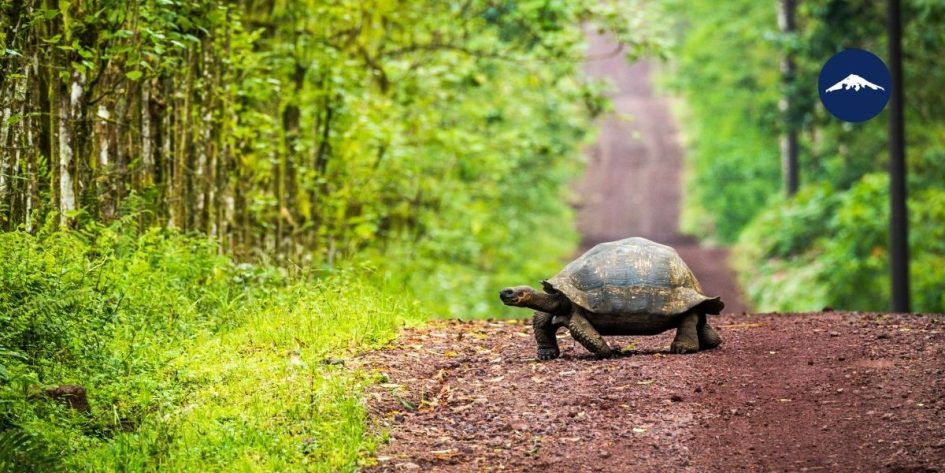
When planning to travel to the Galapagos Islands, you should define what you want to see and do in the archipelago. There is no “best” or “worst” time for planning your travel to the Galapagos Islands. Your visit needs to be based on what activities you want to do, and what flora and fauna you want to see. Of course, you should take into account what type of weather you like.
In the Galapagos Islands, there are certain months and islands that will fit your travel wishes best. In this blog, you will find the information you need to decide what time of the year best suits you when finding tours for your travel to the Galapagos Islands.
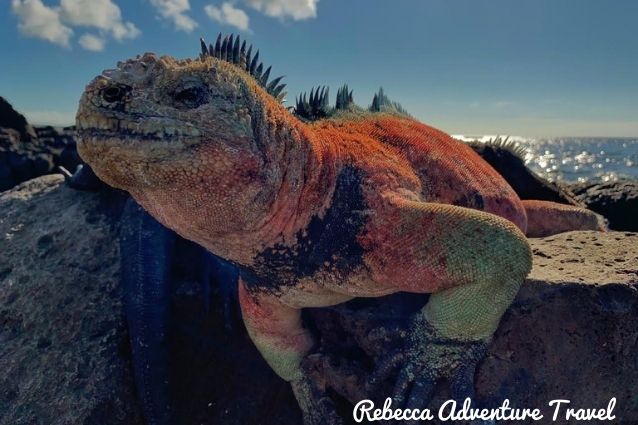
Iguana basking in the sun.
Galapagos, located along the equator, has two seasons: hot and dry. Its environment makes them a unique island ecosystem. The climate is subtropical. Even though it maintains a warm temperature throughout the year, it doesn’t have typical tropical weather. Nevertheless, the archipelago shouldn’t be mistakenly thought of as a Caribbean tropical destination. It is a subtropical climate, with cool ocean currents and a mix of tropical and temperate climates.
The warm season is from December through May. The cool season goes from June through November. Then, when planning to travel to the Galapagos Islands, you should consider three factors:
- Weather and climate.
- Flora and fauna observation.
- Optimal conditions for the activities.
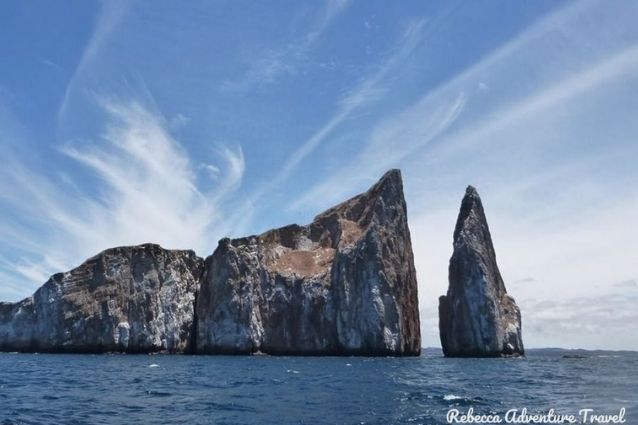
Kicker Rock is one of the best snorkeling spots in the Galapagos Islands.
What to expect weather-wise when you travel to the Galapagos Islands?
Hot season (December through May)
The warm and wet season is characterized by a mixture of rain and sun. While temperatures get warmer, there is also an intermittent mist or drizzle that can be refreshing. The bright sunlight contrasts with the lush vegetation that extends to the highlands. It creates a beautiful scene perfect for taking photos and videos. Consequently, when hiking in the highlands, it is a good idea to pack rain gear for island excursions.
Overall temperatures:
Land: avg.72-86°F/30°C.
Water: avg.76°F/25°C.
Dry season (June through November)
In the cool and dry season, you can expect cloudy skies, cooler temperatures, and dry weather. For instance, if you are seeking a mild climate for excursions, neither too hot nor too cold, the dry season is the perfect option. Misty rain, also known as garua, is very common. However, you can leave the rain gear at home. During this season, the Humboldt Current brings nutrient-rich water from the Antarctic to the islands’ waters. Therefore, the current increases marine activity. In fact, the vegetation is not as lush, but the visibility from the highlands can be spectacular.
Overall temperatures:
Land: avg. low/high 66-79°F/19-26°C.
Water: avg. 72°F/22°C.
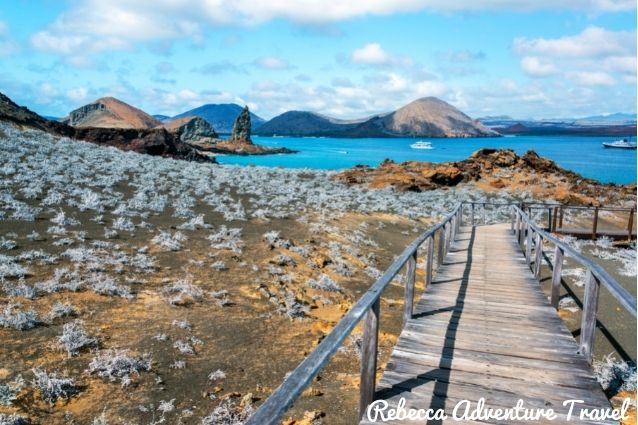
In the Galapagos Islands, you can enjoy wildlife sightseeing on land or at sea, all year long.
What to expect from weather and wildlife when you travel to the Galapagos, month by month?
You can enjoy the wildlife on land or at sea, all year long. Every time you travel to the Galapagos Islands you will be able to see beautiful animals and admire species found only on the islands. However, the best time to see land species is during the warm and wet seasons. On the contrary, the cold and dry season brings an increase in marine fauna. For example, while snorkeling and scuba diving, you will witness underwater magic (maybe you will need a wetsuit for the fascinating water activities).
All year-round, you can see red-footed boobies and masked boobies breeding and nesting. Red-footed boobies are the smallest of all boobies species. They are great flyers, being able to get up to 90 miles when foraging. Also, you can see flightless cormorants, penguins, and flamingos breeding and nesting. Based on this information, you can choose the best tours to the Galapagos Islands we offer. Below you will find a month-by-month guide to the Galapagos Islands:
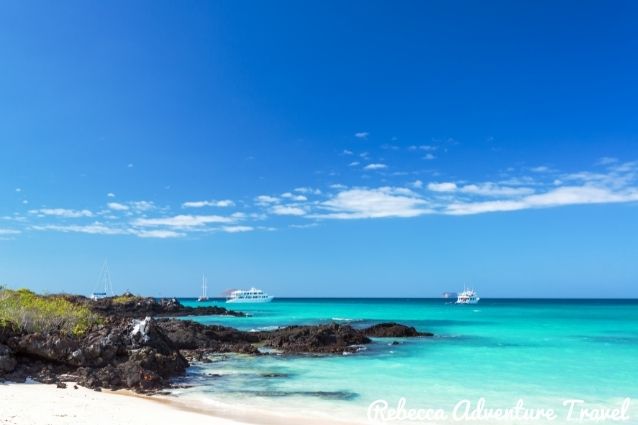
The Galapagos Islands are one of the most unique landscapes on Earth.
January
- As the rainy season starts, Galapagos land birds (such as Darwin finches and Yellow Warbler), begin their mating rituals and start nesting. There are 13 endemic species of Darwin finches found in the Galapagos Islands. The colorful Yellow Warbler is a small songbird with a known “sweet, sweet, sweet” chorus that can be easily recognized. Ask your guide to help you spot this beautiful bird!
- Green sea turtles are starting to arrive on the beaches to lay their eggs in the sand and start their nesting period. Green sea turtles are the only species of sea turtles to nest in the Galapagos. In fact, they are fast swimmers, being able to travel at speeds up to 35 mph.
- On Isabela Island, male Galapagos Land-Iguanas begin their reproductive cycle. They acquire bright colors to attract the female’s attention. Land-Iguanas is one of four species of iguanas on the islands.
- On the other hand, during mating season, the male marine iguanas become brightly colored. Likewise, in Española and Floreana Islands, these animals turn bright green and red.
- Water and air temperatures increase, making it an ideal time for snorkeling!
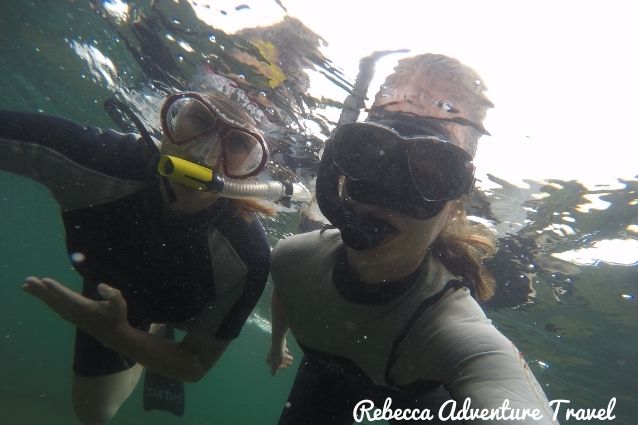
Snorkeling is a must-do activity in the Galapagos Islands.
February
- Warm and sunny days with clear skies. Simultaneously, the climate is perfect for wildlife sightseeing.
- At Santa Cruz Island, marine iguanas start their nesting season. Marine iguanas are the only marine lizard species in the world. They are endemic to the Galapagos. So too, they can dive more than 65 feet (20m) underwater.
- The nesting season of Nazca boobies on Española Island comes to an end in February.
- At Floreana Island, the flamingos begin to nest. The incubation process can take up to 30 days. Galapagos flamingos are one of the most vibrantly pink flamingos in the world. Around the islands, flamingos can be spotted in Floreana, Isabela, Santa Cruz, and Santiago Islands. They can be observed year-round.
- Galapagos penguins can be observed at Isabela and Fernandina Islands. These animals are the only penguin species found in the Galapagos and north of the equator. They are an endangered species, with fewer than 2000 population. Furthermore, they are the smallest penguins in the world and are endemic to the archipelago. Also, they live in caves and the coastal lava.
- The water temperature reaches 77°F/25°C, making it perfect for water activities!
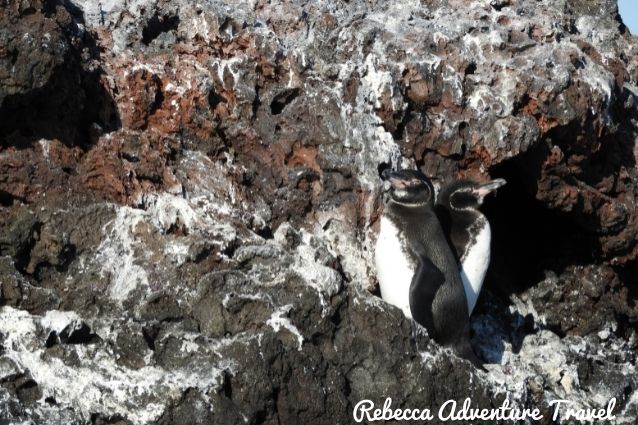
Galapagos penguins can be observed at Isabela and Fernandina Islands.
March
- The weather features intense sun and high temperatures on land and in the water. The water is still warm and visitors can enjoy unique activities such as snorkeling. There are some short tropical rains. The sun is strong and the temperature reaches 86°F/30°C.
- As of the beginning of the summer equinox on March 21st, Albatrosses return to their homes on Española Island. Albatrosses spend most of their time above the open ocean. They are the largest birds in Galapagos. Albatrosses have a wingspan that comes up to two and a half meters. These animals mate for life. Females lay their single eggs on the ground.
- During nesting season, from March to July, you can see flamingos’ courtship and hatchlings. Flamingos have very agile movement thanks to their long legs and neck. The Galapagos flamingos, also known as American flamingos, are smaller and lay smaller eggs than the Caribbean flamingos. They can be found in lagoons near the beach.
- You will find good underwater visibility, with high water temperatures.
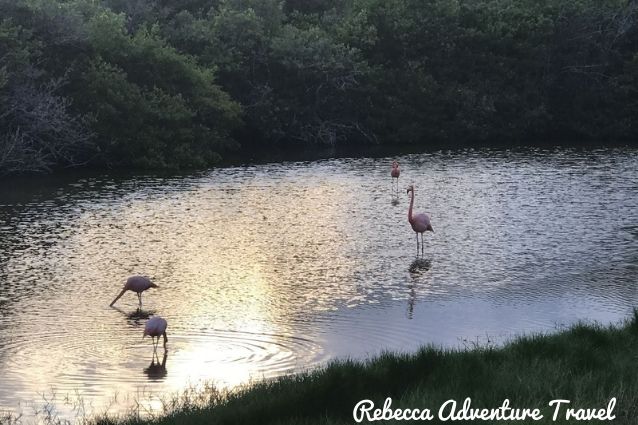
Galapagos flamingos are smaller and lay smaller eggs than the Caribbean flamingos.
April
- Bird lovers must visit Punta Suarez. There, albatrosses have massively arrived to start their courtship ritual.
- The birth season of Galapagos giant tortoises starts. Hence, you will be able to see baby turtles in Santa Cruz, Isabela, and San Cristobal hatcheries. There are 13 living species of Galapagos tortoises. They are among the longest-lived reptiles of all land vertebrates. They spend an average of 16 hours a day resting.
- Additionally, giant tortoises make great friends. It is common to see birds such as Darwin’s finches and Vermilion flycatchers perched on top of their shells. They even have developed a symbiotic relationship, feeding off the tortoise’s skin or on their shell.
- Land iguanas are also starting to break their shells on Isabela Island.
- The weather is still rainy, bringing up the lush vegetation on the islands.
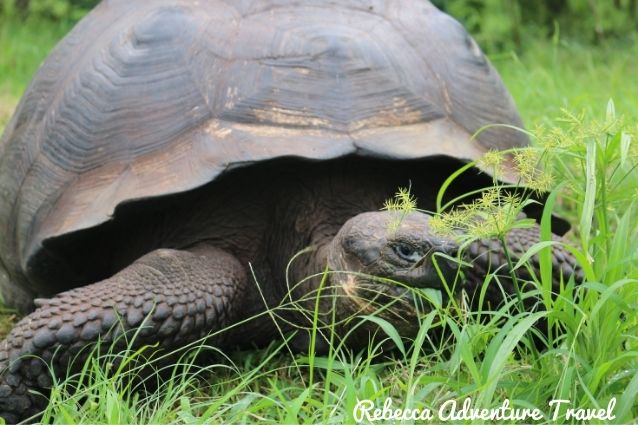
Giant tortoises in the archipelago are so big because there are no predatory animals on the islands.
May
- In Gardner Bay (Española Island) and Puerto Egas (Santiago Island), sea turtles continue with their incubation process.
- The Palo Santo trees begin shedding their blue-green foliage. Palo Santo trees smell like incense.
- In Santa Cruz, the eggs of marine iguanas are starting to hatch. Visitors can see small iguanas on the shores of Puerto Ayora pier.
- Blue-footed boobies start whistling on North Seymour Island. In contrast, females answer with “honk” sounds to show they are “available.”
- On Española Island, albatrosses begin laying eggs and start their resting period. The same happens to the Galapagos dusky-rumped petrel.
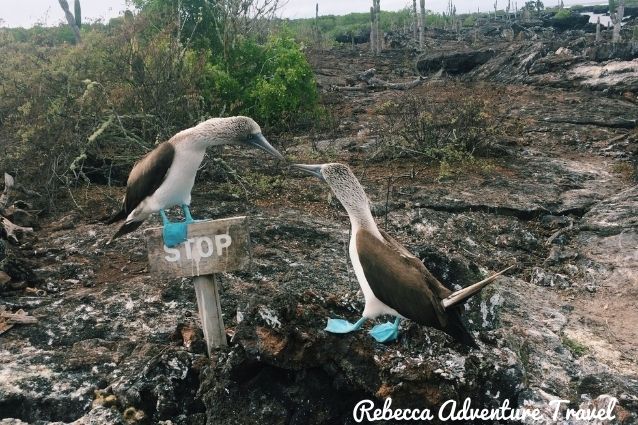
Blue-footed boobies start their courtship rituals.
June
- The warm season begins. The islands have sunny and wet weather. There are warm temperatures on land and at sea,- and occasional rain showers.
- Giant tortoises on Santa Cruz Island are migrating from the highlands to the lowlands. They search for drier places to rest. They start their nesting period.
- Ocean currents are getting nutrient-rich. As a result, humpback whales migrate to equatorial waters along the Ecuadorian coast. Humpback whales can be spotted throughout the open waters of the Galapagos.
- Migratory birds from the south are starting their journey to the north.
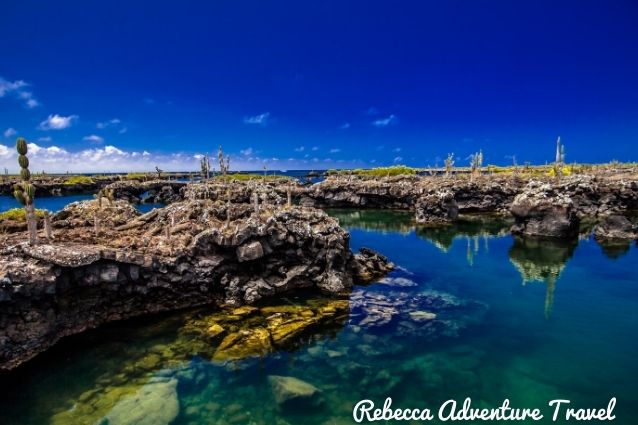
During the warm season, the islands have sunny and wet weather.
July
- On Española Island, blue-footed boobies begin their courtship rituals.
- Seabird chicks are starting to grow and are learning how to survive.
- Non-flying cormorant sea birds are nesting on Fernandina Island. They are the world’s only flightless cormorant.
- Off the coast of Isabela Island, the chances of seeing whales and dolphins increase.
- Lava lizards start their mating rituals, which will last until November. Lava lizards are the most abundant reptiles throughout Galapagos. They can be spotted on every island except Genovesa, Darwin, and Wolf Islands.
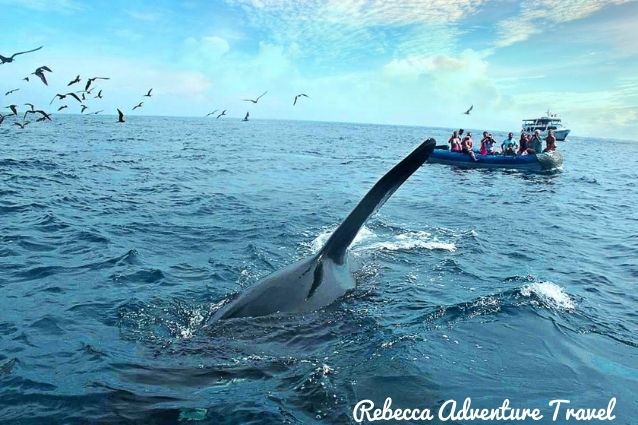
Galapagos is a great place to see whales and dolphins.
August
- On Española and Santiago Islands, the Galapagos hawk starts their mating season. Hawks are at the top of the terrestrial food chain. They are endemic to the Galapagos and are one of the world’s rarest raptors.
- Giant tortoises are making their way back from the highlands of Santa Cruz Island.
- Masked boobies and swallow-tailed gulls start their nesting season on Genovesa Island.
- Ocean temperatures drop due to sea currents crossing the archipelago.
- Sea lions’ births start to take place on several islands. Did you know that when the pup is born, it develops a unique call to distinguish it from the rest while it bonds with its mother?
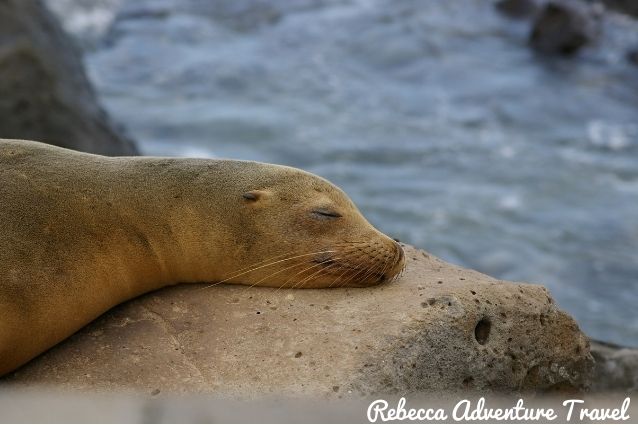
Sea lions’ births start to take place on several islands.
September
- The penguins of Bartolome Island are showing remarkable activity. Visitors can snorkel with penguins.
- The majority of seabirds are very active at their nesting sites.
- September is a great time for whale and dolphin watching.
- Scientists have recorded around 24 species of cetaceans in the Galapagos Marine Reserve. There have been identified over 20 different species of whales, such as sperm whales, Bryde’s whales, and orcas. The cooler months (through July to November) are the best time to watch these animals. Therefore, blue, humpback, minke, sei, and short-finned pilot whales are regular visitors but more difficult to find.
- Bottle-nosed dolphins and White-bellied dolphins are the most abundant and easy to spot.
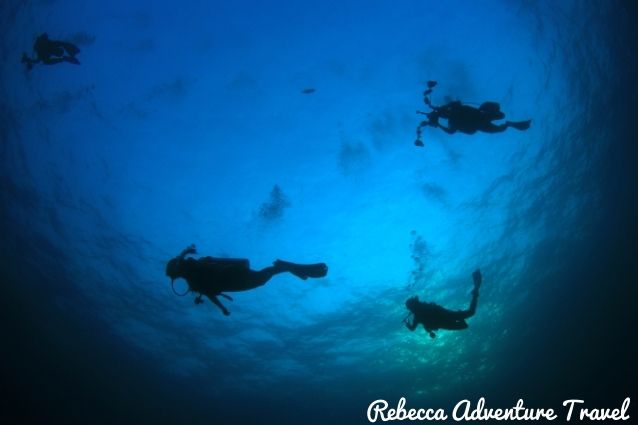
Snorkeling in the Galapagos Islands is spectacular because of its crystalline waters.
October
- Temperatures are cool and ideal for hiking and wildlife observation.
- Lava herons begin their nesting period, which lasts until March. These birds lay between 1 to 3 eggs and are incubated on the shores for approximately 3 weeks.
- The mating season of the Galapagos sea lion starts.
- Blue-footed boobies start raising their chicks in Española and Isabela Islands. The animals have an incubation period of approximately 45 days.
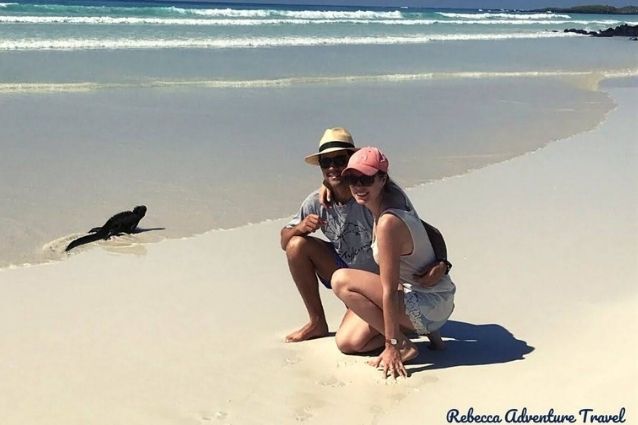
You can see different types of animals everywhere you go on the Islands.
November
- Green sea turtles are beginning their mating season. They can be observed throughout the entire archipelago.
- Possibility to see whale sharks in the north of the Galapagos Marine Reserve. Whale sharks are the largest species of sharks in the world and the largest fish alive. They have an average size of 10-12 meters.
- The transition from the cool and dry season to the warm and wet season begins. Then, the water temperature slowly rises, allowing doing activities such as paddleboarding, kayaking, snorkeling, and diving.
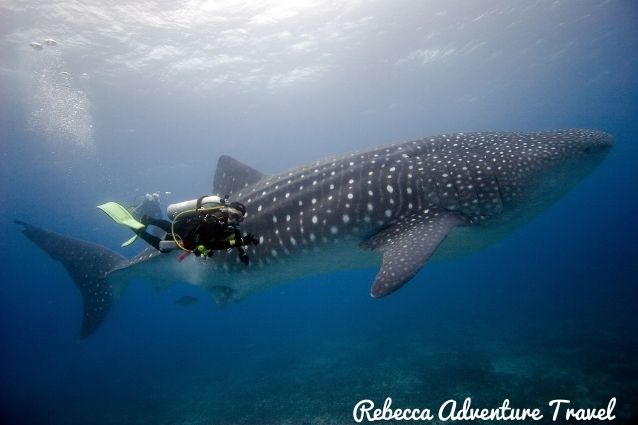
You can see whale sharks in the north of the Galapagos Marine Reserve.
December
- Giant tortoise eggs begin hatching their eggs.
- Green sea turtles are showing their mating rituals. In fact, visitors can appreciate their courtships on the coasts of Santa Cruz (Bachas Beach) and Floreana (Punta Cormorant) Islands.
- The first albatrosses’ chicks are hatching.
- Migratory birds from the north are starting their journey to the south.
- At last, the highlands start to get “green” again because of the rain.
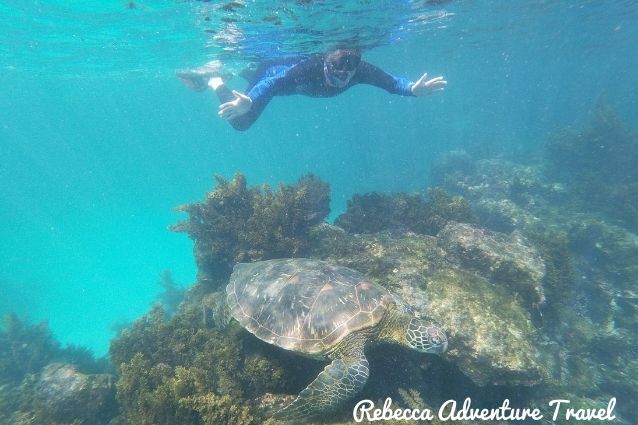
Sea turtles can be spotted on every island around Galapagos.
What type of activities can you do when you travel to the Galapagos islands in each season?
There are countless activities you can enjoy while you travel to the Galapagos! On land or at sea, there is plenty of time to admire wonderful wildlife. Therefore, excursions, hiking, or biking may be more comfortable between June through November because of cool temperatures. The rich nutrient waters are at optimal conditions for sea lions, marine iguanas, sharks, and sea birds. It’s an exceptional time to go swimming, snorkeling, kayaking, and diving. Additionally, migratory whales come to Galapagos, giving tourists a spectacular scene of calves playing and learning from their mothers.
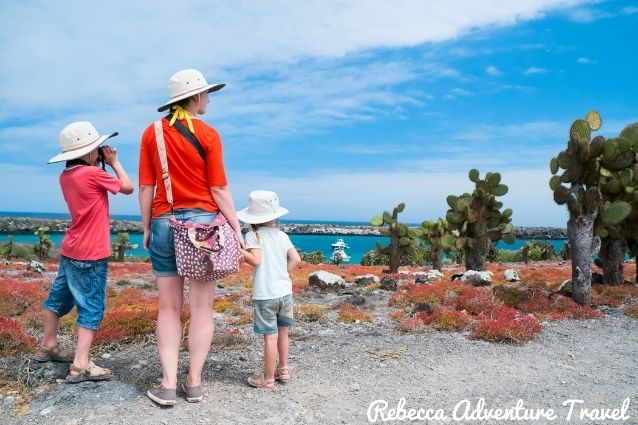
There are countless activities you can enjoy with your family when you travel to the Galapagos Islands.
In the hot season, between December through May, rainfall is scarce. It makes it easier for land and sea excursions. During this season, tours to the Galapagos Islands will take you where giant tortoises are egg hatching. Likewise, you can see plenty of species while birdwatching, and witness an abundance of land animal activity. This happens because food sources are plentiful. Seawater is warmer. Snorkeling, swimming, and diving are great activities for the season. You may not need to wear a swimsuit as during the other season.
You can enjoy active volcanoes, idyllic beaches, and delightful wildlife year-round. While planning your travel to the Galapagos, make sure to build a clear itinerary. Based on your preferences, you can pick island hopping tours (check our incredible Island Hopping tours and Galapagos Last Minute Cruise Deals). Make sure you have enough time for landscape exploring and wildlife interaction.
When should you plan your trip to travel to the Galapagos Islands?
Galapagos Islands is a fabulous year-round destination. Then, the best time to travel to the archipelago depends on your personal preferences for wildlife sightings, and the activities you enjoy. Both seasons, hot and dry, are great times while you travel to the Galapagos.
A trip to the Galapagos is a life-changing experience. For instance, visitors will witness the magic inside a “Living Laboratory of Evolution.” Be prepared to enjoy land and sea activities, the panoramic view, and the sensational interaction with animals you can’t find anywhere else on the planet. Galapagos is a year-round destination with subtle differences in the islands throughout the months. Only at the Galapagos Islands will you see how natural selection takes place. Thus, the best time to travel to the Galapagos is any time of the year!
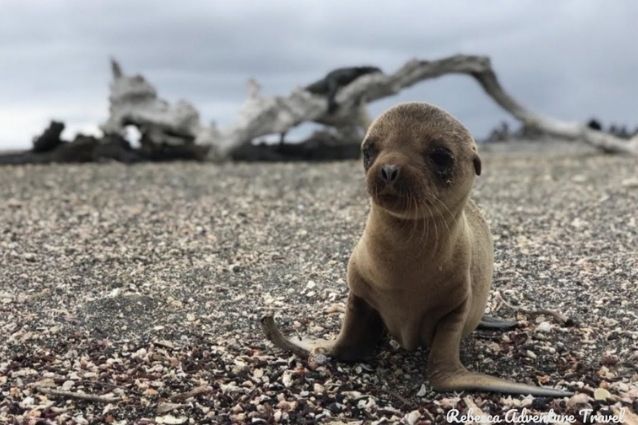
In the Galapagos Islands you can spot sea lion pups with their mothers.
Search for the best Galapagos Tour for you!
Hopefully, this has helped you decide when to travel to the unique Galapagos Islands. In addition, if you need more information regarding when to travel to Galapagos or Ecuador, you can contact us. One of our Destination Experts will be happy to help.
Happy and safe travels!
Did you like this blog? You might also like:
- The Best Restaurants in the Galapagos Islands
- Galapagos Islands Tour: Land-based vs Cruise
- Top 7 Galapagos Islands Hopping Tours




